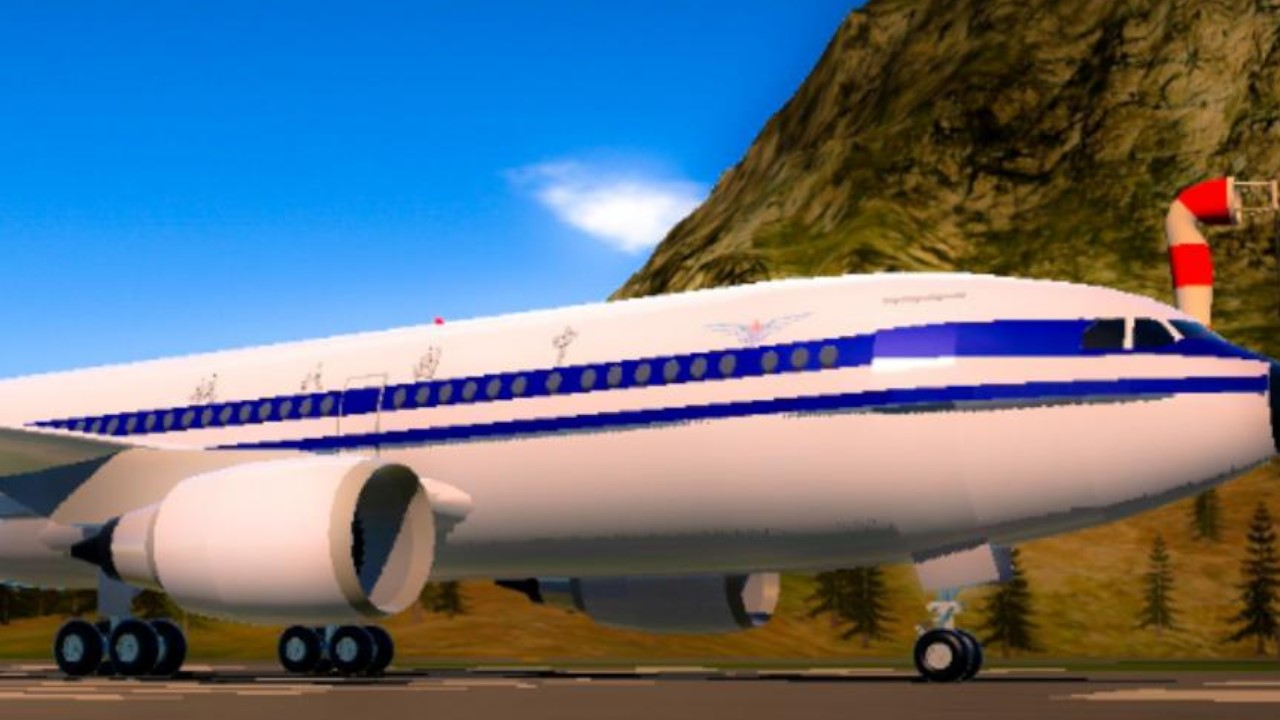I think I made it a little rough myself, but I hope you like it. Thank you.

As a classic short- and medium-range dual-aisle wide-body passenger aircraft, the Airbus A310 has left a strong mark in the history of world civil aviation and is also of great significance to the development of China's civil aviation. This article will delve into the Airbus A310 aircraft operated by China's civil aviation, including its introduction background, technical characteristics, operational history, contribution and impact, and its destination after retirement.
In the 80s of the 20th century, the global civil aviation industry developed rapidly, and airlines had a strong desire for aircraft with different passenger capacity and range requirements. Airbus has developed the A310 based on the A310, which has become a high-quality choice for airlines to optimize their route networks and improve operational efficiency with more flexible capacity and moderate range.
At that time, China's civil aviation fleet was in the stage of upgrading, and in order to improve the operation capacity of domestic trunk lines and international regional routes, it began to actively introduce advanced passenger aircraft. In 1985, the East China Administration of the Civil Aviation Administration of China (now China Eastern) introduced the first Airbus A310-200 aircraft with registration number B-2301, which was also the first Airbus dual-aisle wide-body aircraft introduced and operated in Chinese mainland. Since then, two aircraft of the same type have been introduced, and three A310 aircraft have opened a new chapter in the cooperation between China's civil aviation and Airbus.
- Fuselage and wings: The A310 shortens the fuselage on the basis of the A300, with a length of 46.66 meters, making the fuselage more compact and more suitable for short- and medium-haul routes. The redesigned wing has a higher wingspan ratio of 43.89 meters, improving the aircraft's lift and fuel efficiency. The A310-200, delivered from May 1986, was equipped with winglets to further reduce wing drag and improve performance.
Cabin layout: Adopting a typical two-level cockpit layout, the standard passenger capacity is 220 people, the cabin is spacious and comfortable, and the dual-aisle design is convenient for passengers to enter and exit and crew service.
Glass cockpit: The A310 is the world's first airliner to feature an electronic flight instrument system with an electronic flight monitor ("glass" cockpit) in the cockpit. 6 color multi-functional cathode ray tubes on the main instrument panel, 4 for the electronic flight instrument system, real-time display of important information such as flight attitude, altitude, and speed; 2 for engine performance parameter display, convenient for pilots to monitor engine status.
- Two-person crew system: The first to realize the two-person crew system, replacing the work of flight engineers through the automatic flight system, simplifying the cockpit staffing, improving operational efficiency, and becoming an industry model, leading the subsequent aircraft design trend.
Fly-by-wire control system: using electronic signals to replace the control surface operated by steel cables in the past, the pilot's operation instructions are transmitted through electrical signals, with fast response speed and high accuracy, which significantly improves aircraft maneuverability and flight safety.
Engine: Equipped with two General Electric CF6-80A turbofan engines, each with strong thrust, providing stable and reliable power for the aircraft to ensure flight safety and performance.
- Range: The A310-200 has a maximum range of 3,373 kilometers at full load, and has passed the Twin-Engine Extended Range Flight (ETOPS) certification and can perform long-distance missions such as transoceans; The A310-300 has increased its maximum fuel capacity from 55,200L to 75,470L for the 200 and a range of 9,600 kilometers through improvements such as increasing fuel tanks, meeting the needs of airlines for long-distance operations.
After the delivery of the first Airbus A310 in 1985, it was put into operation on major domestic cities such as Shanghai to Beijing, Guangzhou, Hong Kong, as well as international regional routes from Shanghai to Tokyo and Osaka.
Since 1992, China Eastern Airlines has transferred three Airbus A310 aircraft to the former China Northwest Airlines (now China Eastern Airlines Northwest Branch) for operation. In this way, the Northwest Branch has realized the transition of the fleet from Soviet-made aircraft to European and American aircraft, from narrow-body aircraft to wide-body aircraft, and has reached a new level in terms of model update, business philosophy, and management level. Since then, the Northwest Branch has relied on the A310 aircraft to continuously optimize the route network and improve operational efficiency, and the A310 has become its backbone model for transportation and production.
With the development of aviation technology and fleet updates, the A310 has gradually become less competitive in terms of fuel economy and maintenance costs. On September 25, 2006, China Eastern Airlines Northwest Branch held a retirement ceremony for Airbus A310 aircraft, marking the official withdrawal of three A310s from China's civil aviation routes. In China's civil aviation, it has flown nearly 100,000 hours, completed about 44,000 takeoffs and landings, and safely transported a large number of passengers.
- Flight management: The introduction of A310 promotes the improvement of the flight management level of China's civil aviation, and the two-person crew system promotes the transformation of the flight crew from multi-person to two-person system, promotes the flight training system and flight quality monitoring system to continue to be in line with the international level, and accumulates experience for the subsequent introduction and operation of new aircraft.
Maintenance management: The introduction of new models promotes the transformation of maintenance management from empirical and extensive to scientific, realizing the transformation from traditional scheduled maintenance to reliability-centered maintenance mode. China's civil aviation maintenance personnel have accumulated rich experience through learning and mastering the advanced maintenance technology and concepts of A310, improving the overall maintenance support capability, and providing strong support for the safe operation of the fleet.
Flight talents: The captains of A310 heavy aircraft trained over the years have completed the talent reserve for the subsequent introduction of A320 series and other aircraft, and these pilots have quickly adapted to new aircraft with the flight experience and technology accumulated on the A310 and become the backbone of China's civil aviation flight team.
- Maintenance talents: In the process of A310 operation and maintenance, the maintenance system has cultivated a skilled maintenance team, who master advanced maintenance technology and management methods through targeted special research on old models, and provide strong support and guarantee for the maintenance of subsequent Airbus series aircraft and other new aircraft.
The A310 has been put into operation to enhance the competitiveness of China's civil aviation on domestic trunk routes and international regional routes, attract more passengers to choose civil aviation travel, and promote the development of the aviation market. With the help of its capacity and range advantages, airlines optimize the layout of route networks, open up more new routes, strengthen connections between major domestic and international cities, and promote the internationalization of China's civil aviation.
After retirement, the A310 with registration number B-2301 was repurchased by Airbus and donated to the Civil Aviation Museum in 2007, as a symbol of the beginning of cooperation between China's civil aviation and Airbus, as well as an important witness to the development of China's civil aviation, which has great historical and commemorative value.
In 2025, Airbus, together with the China Civil Aviation Science Popularization Foundation and the Civil Aviation Museum, will launch the A310 aircraft protection, activation and utilization project. The project will carry out all-round transformation of the aircraft cockpit and cabin to create a new landmark of aviation science education integrating aviation science education, parent-child leisure and entertainment, check-in and photography and many other functions. It is expected to be completed and open to the public in 2027, and will play its science education function, stimulate the public's interest and love for aviation technology, especially young people, and inherit aviation culture
As the first Airbus dual-aisle wide-body aircraft introduced by China's civil aviation, the Airbus A310 not only brings advanced technology and operational concepts, promotes the comprehensive improvement of China's civil aviation in terms of technology, management, talent training, etc., but also promotes the expansion of China's civil aviation market and the optimization of route networks. Although it has been retired, it will continue to play its value in a new form through the protection, activation and utilization project, become an important carrier connecting the past and the future, spreading aviation culture, and inspiring China's civil aviation to continue to move forward on the road of pursuing excellence and innovative development.
Specifications
Spotlights
- Anguirus380 4 months ago
- Aguywhobulitplanes 4 months ago
General Characteristics
- Predecessor Airbus A310-300[GE] Emirates
- Created On Android
- Wingspan 144.0ft (43.9m)
- Length 158.5ft (48.3m)
- Height 55.0ft (16.8m)
- Empty Weight N/A
- Loaded Weight 87,794lbs (39,823kg)
Performance
- Power/Weight Ratio 1.304
- Horse Power/Weight Ratio 0.034
- Wing Loading 26.5lbs/ft2 (129.5kg/m2)
- Wing Area 3,311.1ft2 (307.6m2)
- Drag Points 10159
Parts
- Number of Parts 479
- Control Surfaces 9
- Performance Cost 3,092






@Anguirus380 Thank you.
Nice job i like your plane, i mean your plane livery
@YWDLG no problem
@Aguywhobulitplanes Thanks!
Nice plane